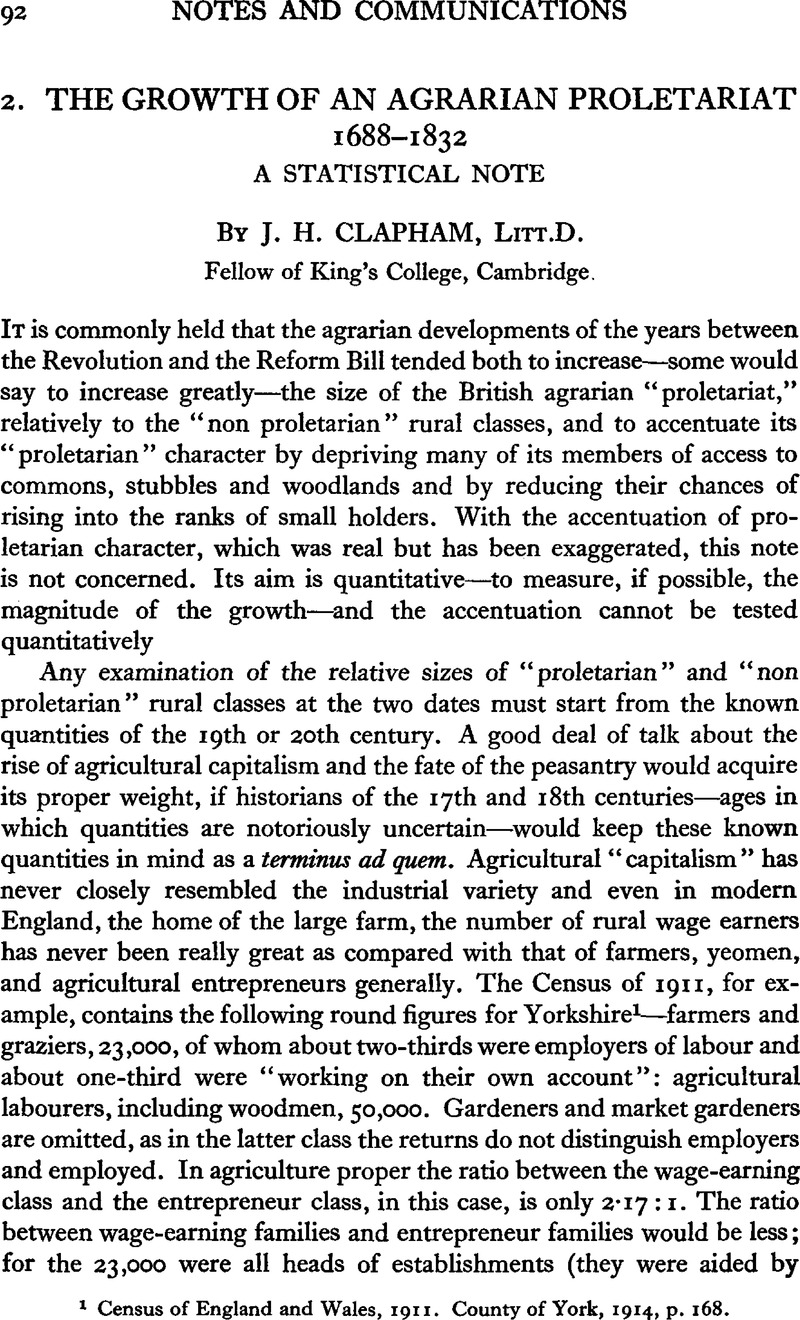Article contents
2. The Growth of an Agrarian Proletariat 1688–1832; a Statistical Note
Published online by Cambridge University Press: 20 December 2011
Abstract

Information
- Type
- Notes and Communications
- Information
- Copyright
- Copyright © Cambridge University Press 1925
References
page 92 note 1 Census of England and Wales, 1911. County of York, 1914, p. 168.
page 93 note 1 Accounts and Papers, 1833, XXXVI. p. ix.
page 93 note 2 In 1919 the number of persons engaged [i.e. occupied, not employed] per holding in England was 2·9, and the number employed per 100 acres of cultivated land was 3·2. Venn, J. A., Foundations of Agricultural Economics, 1923, p. 236.Google Scholar
page 94 note 1 With some inaccuracies in Davenant, Works (1771 edn.), II. 184Google Scholar; more accurately in George Chalmers' edition of King's Observations, 1810.Google Scholar
page 94 note 2 J. D. Rogers in Dic. of Political Economy, s.v. Yeoman.
page 94 note 3 Op. cit. II. 203. To those who fancy that the 17th century cottager was not landless may be commended Davenant's note: “but some of these having land about them, in all our calculations, we have computed the cottagers but at 500,000 families.” He seems to have thought that only about one single-hearth house in ten had “land about it.”
page 94 note 4 Moderne Kapitalismus, 3rd edn. II. 624.
- 4
- Cited by

